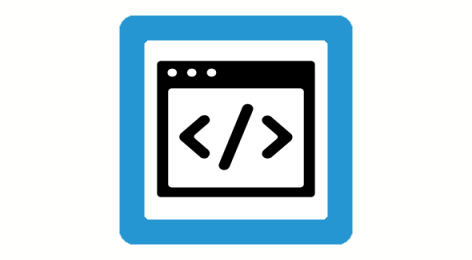Definition of an axis configuration (#AX DEF)
This NC command defines a new axis configuration to replace the existing axis configuration. Only exactly the axes which are programmed in NC command form the new axis configuration of the NC channel.
Syntax: |
#AX DEF [NAM, NBR, IDX] [<axis_exchange_sequence> {,<options>} ] { [<axis exchange sequence> {,<options>} ] } |
NAM, NBR, IDX | Logic switches for handling conflicts: NAM: Handling redundant axis names NBR: Handling redundant axis numbers IDX: Handling redundant axis indices |
Notice

Logic switches can be programmed individually or in combination.
<axis_exchange_sequence> consisting of: |
|
<axis_name> | The permissible strings for axis designation start with the letters A, B, C, Q, U, V, W, X, Y and Z. |
Notice

In case of conflicts within the programmed axis exchange sequence:
Redundant axis names → ERROR, program abort
In case of conflicts with existing axes in the NC channel:
Identical axis names, different axis numbers → ERROR, program abort
If logic switch NAM is set, a conflict is resolved as follows:
The axis receives the default axis name from its axis parameter list P-AXIS-00297. The user must ensure a clear definition of the default axis name in the list.
<axis_number> | The physical assignment of axes takes place via the logical axis number. Mathematical expressions are permissible. The logical axis number must be known in the axis management. |
Notice

In case of conflicts within the programmed axis exchange sequence:
Redundant axis numbers → ERROR, program abort
In case of conflicts with existing axes in the NC channel:
Axis number already exists in NC channel → WARNING
If logic switch NBR is set, a conflict is resolved as follows:
The axis request is ignored, i.e. it is not executed.
<axis_index> | The axis index defines the location of the axis inside the axis group of the NC channel. It then defines the main and the tracking axes (see the table below). Mathematical expressions are permissible if their results are within the range [0... maximum axis number -1]. The axis index may not yet be assigned an axis. 0: 1st main axis in the machining plane. 1: 2nd main axis in the machining plane. 2: 3rd main axis generally perpendicular to the machining plane. 3: 1st tracking axis. ...n_ (n-2) tracking axis. |
Attention

To make programming easier, the axis index input can be left empty for tacking axes. In this case, the next free axis index after index 3 is then assigned automatically to this tracking axis. However, it must be noted that the index of a tracking axis is important with regard to various functionalities. For example, all transformational axes must be arranged after the main axes with no gaps in the case of kinematic transformation (RTCP). In such cases, it is then necessary to program the axis index explicitly for the tracking axes.
Notice

In case of conflicts within the programmed axis exchange sequence:
Redundant axis indices → ERROR, program abort
In case of conflicts with existing axes in the NC channel:
Axis index is already assigned in the NC channel, different axis → ERROR, program abort.
If logic switch IDX is set, a conflict is resolved as follows:
The next free index in the axis configuration of the NC channel is automatically determined for the axis.
<options> | Offsets are kept axis-specific. The adoption of different offsets can be controlled for requesting axes using the following keywords: ---: No adoption of offsets (default) ALL: Adopt all offsets * BPV: Adopt reference point offset PZV: Adopt clamping offset WZV: Adopt tool offset * NPV: Adopt zero offset MOFFS: Adopt measuring offset SOFFS: Adopt command value/manual mode offset PSET: Adopt actual value offset |
Attention

* When the tool is selected, please note the following when adopting tool offsets with #AX DEF:
- If axes are only swapped (internal axis exchange) by #AX DEF and otherwise no additional axes are specified or requested, all offsets (including tool offsets) are also replaced and continue to remain active. Specifying keywords to adopt offsets has no effect.
If a new tool is then selected, the replaced offsets are replaced by the new offsets of the tool. - As soon as an axis release or an axis request is triggered by #AX DEF (external axis exchange), the tool offsets are re-adopted in the calculation of the sequence of axes indexed in the tool data. Therefore, any adopted tool offsets are replaced by the current tool offsets. If the original tool offsets in the corresponding axes should continue to apply, a new tool must be selected with offsets which have been adapted to the new axis arrangement.
You are therefore advised to run #AX DEF when the tool is deselected and to ensure the correct assignment of tool offsets in the data record of a newly selected tool by appropriate parameterisation.
Example

Index of tool offsets in tool data | [0] | [1] | [2] | [3] |
Parameterised tool offsets e.g. for T1 | 50 | 0 | 70 | 20 |
Axis configuration at program start | X | Y | Z | --- |
Included tool offsets after T1 selection | 50 | 0 | 70 | --- |
"Internal" #AX DEF {Z, X, Y}: | Z | X | Y | --- |
Tool offsets are also swapped or | 70 | 50 | 0 | --- |
"External" #AX DEF {Z, X, Y, B}: | Z | X | Y | B |
Tool offsets are again recalculated depending on T1 | 50 | 0 | 70 | 20 |